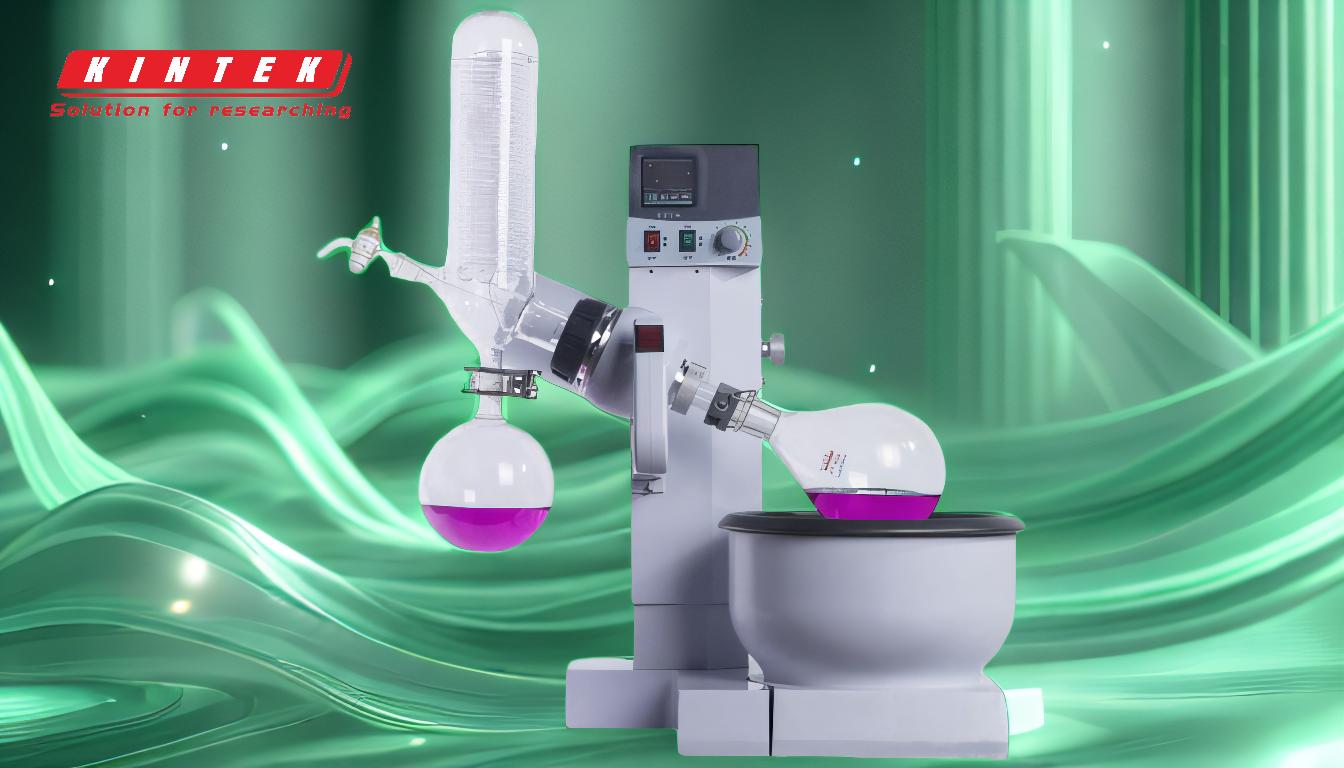Distillation is a process used to separate components of a liquid mixture based on their boiling points. During distillation, the mixture is heated, and the component with the lower boiling point vaporizes first. The vapor is then condensed back into a liquid and collected. The boiling point measured during distillation is influenced by factors such as the composition of the mixture, the purity of the components, and the pressure applied. The use of a thermometer in distillation setups is critical to monitor the boiling point accurately, ensuring the desired component is collected at the correct temperature. This process allows for the purification or separation of substances based on their volatility.
Key Points Explained:

-
Distillation Process Overview:
- Distillation involves heating a liquid mixture to vaporize the more volatile component(s).
- The vapor is then condensed and collected as a purified liquid.
- The boiling point of the liquid being distilled is a key parameter in this process.
-
Effect of Distillation on Boiling Point:
- In a mixture, the boiling point is not a single value but a range, as different components vaporize at different temperatures.
- The boiling point of the mixture is lower than that of the less volatile component and higher than that of the more volatile component.
- As distillation progresses, the boiling point of the remaining liquid mixture increases because the more volatile components are removed.
-
Role of the Thermometer:
- A thermometer is used to monitor the temperature during distillation.
- It is placed at the top of the Y-adaptor to measure the boiling point of the vapor, which corresponds to the boiling point of the component being collected.
- Accurate temperature measurement ensures that the desired component is collected at the correct stage of the distillation process.
-
Factors Influencing Boiling Point During Distillation:
- Composition of the Mixture: The presence of multiple components affects the boiling point range.
- Purity of Components: Impurities can alter the boiling point, making it less predictable.
- Pressure: Lowering the pressure (vacuum distillation) reduces the boiling point, which is useful for heat-sensitive compounds.
-
Practical Implications for Equipment and Consumable Purchasers:
- When purchasing distillation equipment, ensure the thermometer is accurate and durable, as it is critical for monitoring the process.
- Consider the material and design of the Y-adaptor to ensure compatibility with the thermometer and other components.
- For consumables, choose high-quality thermometers and adaptors to minimize breakage and ensure reliable performance.
By understanding how distillation affects boiling points and the importance of accurate temperature measurement, purchasers can make informed decisions about the equipment and consumables needed for efficient and effective distillation processes.
Summary Table:
| Key Aspect | Details |
|---|---|
| Distillation Process | Separates liquid mixtures based on boiling points. |
| Boiling Point Range | Mixtures have a boiling point range, not a single value. |
| Role of Thermometer | Monitors vapor temperature to ensure accurate collection of components. |
| Influencing Factors | Composition, purity, and pressure affect boiling points during distillation. |
| Equipment Considerations | Use accurate thermometers and durable Y-adaptors for reliable performance. |
Optimize your distillation process with the right equipment—contact our experts today!











